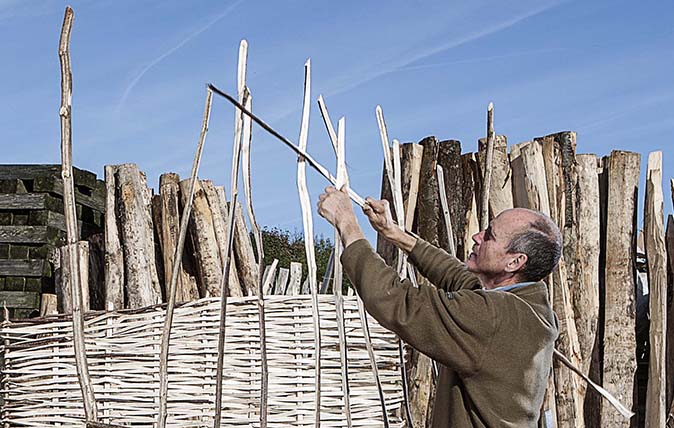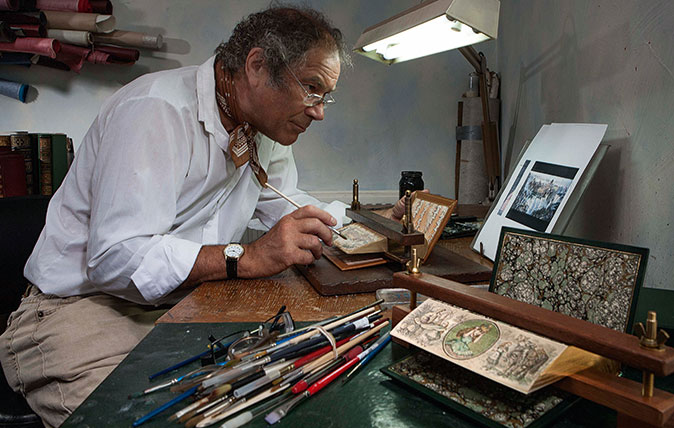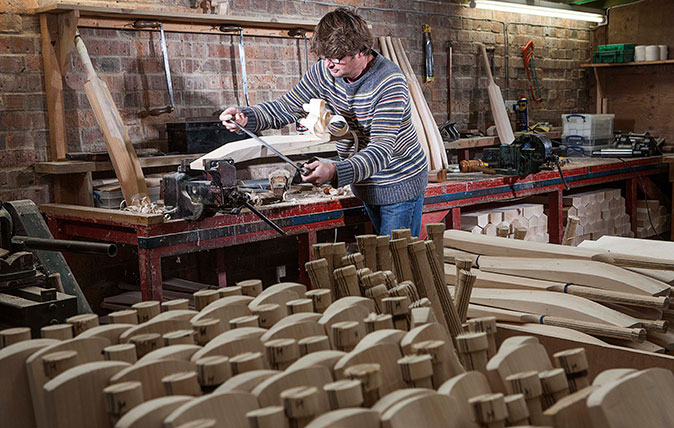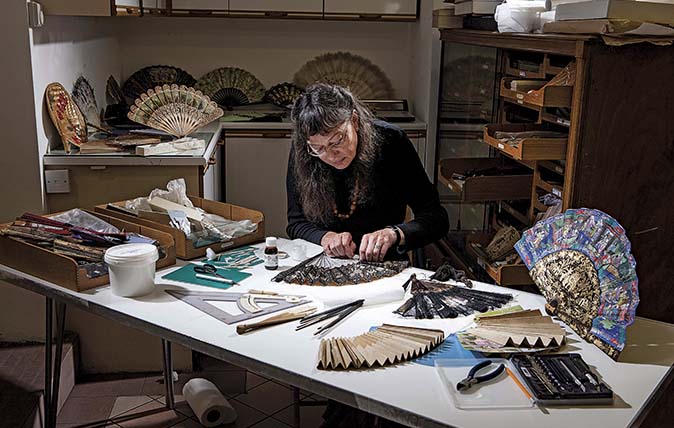The traditional fence-maker who has been turning out wattle hurdles for nearly 25 years
Traditional hazel fencing – or 'wattle hurdles' as they're properly known – is as popular as ever, a beautiful hand-made alternative to cheap, mass-produced panels which have taken over the world. Tessa Waugh meets Simon Fowler, an artisan who has spent a lifetime honing his craft.


‘It’s a long time since farmers used hurdles like these,’ says Simon Fowler, yet wattle hurdles, which are made from hazel and sometimes willow, have been granted a second life as garden fencing, providing privacy from neighbours, and as attractive screens to hide oil tanks and wheelie bins from view.
Mr Fowler, who’s photographed here with his apprentice, Jack Crowshaw, has been making hurdles in Derbyshire since 1994 and is living proof that this isn’t a job for the faint-hearted. ‘We’re outside all year round and it involves hard work and long hours,’ he explains.

Hazel rods, like the ones in the above picture, are harvested from woodland that’s coppiced every seven or eight years in order to enhance the flora and fauna, then left to dry out for 4–6 weeks before use.
In a good week, Mr Fowler can make about 25 of the smaller 3ft-high hurdles – each one comprises nine uprights, with thinner round rods at the bottom and a central weave constructed from split hazel, which is twisted around at the end.

Buying cheaper, imported hurdles is a false economy, warns Mr Fowler: ‘They tend to be inadequately twisted at the end or made from rods that are sawn, rather than split with a billhook, which makes them weaker, less waterproof and much less durable.’
Find out more at www.peaktraditionalfencing.co.uk and see more British craftsmen and women at heritagecrafts.org.uk


Credit: Richard Cannon
Exquisite houses, the beauty of Nature, and how to get the most from your life, straight to your inbox.
The trombone maker: ‘There’s been a lot of trial, error and scrap - but after 10 years, we got there'
Michael Rath, founder of Rath Trombones, explains to Kate Green why the powerful, sonorous trombone is both tricky to play

Credit: Martin Frost photographed by Richard Cannon ©Country Life
The disappearing art of fore-edge painting, and the last man in Britain still doing it for a living
Giles Kime profiles the amazing Martin Frost, the last commercial fore-edge painter in the country.

Credit: Andrew Kember of Salix cricket bats (Photo ©Richard Cannon / Country Life)
The cricket bat-maker: 'People don’t believe it takes so much to achieve the final product. We don’t want to rush anything'
Andrew Kember has a huge waiting list of people clamouring for his Salix cricket bats, but he insists on keeping

The fan maker: ‘If you can fold a piece of paper, you can do it’
Caroline Allington is one of three people in the UK known for the heritage craft of fan-making. She explains to
Country Life is unlike any other magazine: the only glossy weekly on the newsstand and the only magazine that has been guest-edited by His Majesty The King not once, but twice. It is a celebration of modern rural life and all its diverse joys and pleasures — that was first published in Queen Victoria's Diamond Jubilee year. Our eclectic mixture of witty and informative content — from the most up-to-date property news and commentary and a coveted glimpse inside some of the UK's best houses and gardens, to gardening, the arts and interior design, written by experts in their field — still cannot be found in print or online, anywhere else.
